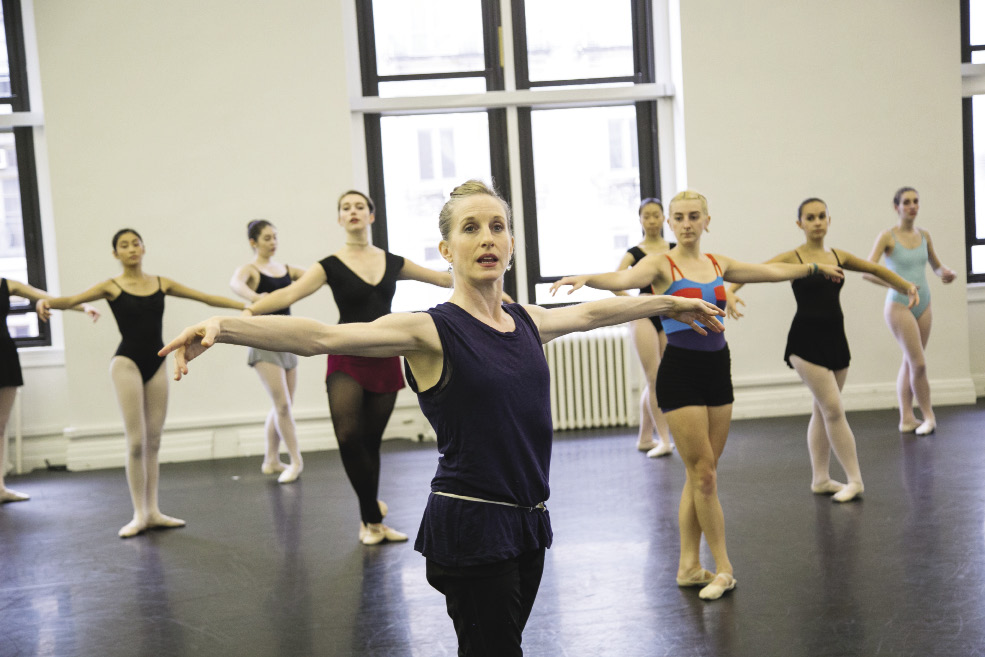
Women often are underrepresented as leading choreographers and artistic directors. Some theorize that men are selected for these roles because they are fewer in number in the field. Others say that sexism may inhibit women who strive for these roles. Against this backdrop, it’s notable that Barnard’s Department of Dance boasts a number of leading artistic directors and choreographers on its faculty: Colleen Thomas-Young, Jennifer Archibald, Jodi Melnick, Margaret Morrison, and Ashley Tuttle.
In addition to Twyla Tharp ’63—perhaps the most well-known woman choreographer in the ballet world—Barnard has elevated the renowned German choreographer and dancer Sasha Waltz, whose Fantasie was performed by students at the Barnard/Columbia Dances at New York Live Arts last December. “Barnard is the first college in the U.S. to present Waltz’s work,” says Professor Katie Glasner, chair and senior associate of the Department of Dance.
In April, Barnard invited four accomplished dancers to campus to share their stories at “The Next Stage: Ballerinas Find New Careers.” Leading the conversation was Lynn Garafola ’68, recently retired after 16 years at Barnard, who helped shape the field of dance history. Also on the panel was Wendy Whelan, who has enjoyed a 30-year career with the New York City Ballet (NYCB) and is the inaugural Lida Orzeck ’68 Distinguished Artist-in-Residence at the College. She teaches master classes and participates in public talks on campus. Whelan is featured in the documentary Restless Creature, which was screened in February at the Athena Film Festival.
Whelan was joined at the April event by Virginia Johnson, artistic director of the Dance Theatre of Harlem and a founding member and principal dancer with the company for more than 20 years; Cuban-born Lourdes Lopez, artistic director of Miami City Ballet since 2012 and dancer with the NYCB for 24 years; and Arlene Shuler, Columbia ’77 GS, ’78 LAW, who is the president and CEO of New York City Center, where she began her career as a dancer with The Joffrey Ballet.
They are well-positioned for the future because, said Johnson, “Dance is a language, and you can use that language in different ways to open up what is possible.” •
Click here for Whelan's New York Times Op-ed on performing in a Balanchine ballet.
